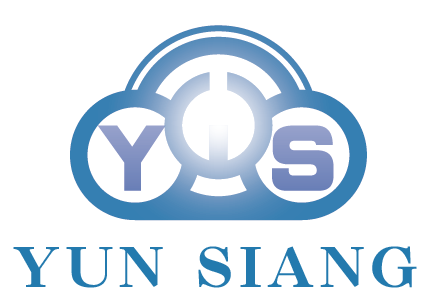在競爭激烈的工程領域,如何有效地建立品牌信任與提升曝光度,是每個工程公司決策者、行銷主管及品牌經理都需面對的重要課題。傳統的行銷方式往往難以全面展現工程公司的專業性、技術實力以及對社會的貢獻,此時,紀錄片行銷便成為一個不容忽視的強大工具。
紀錄片以其真實、紀實的特性,能夠深入呈現工程項目的全貌,從規劃、設計到最終的落成,鉅細靡遺地記錄每一個環節。透過鏡頭,觀眾得以深入瞭解工程的複雜性、技術的難關以及團隊的專業與付出,從而有效地建立對工程公司的信任感,並將其塑造成行業內的權威。相較於傳統的廣告或宣傳片,紀錄片更能傳達品牌深層的內涵,建立更深刻的連結。
一部製作精良的工程紀錄片,不僅能在行業內部引起關注,更有機會透過影展、線上影音平臺、企業官網、社交媒體等多個平臺觸及更廣泛的受眾,增加公司及其項目的曝光度。工程項目往往對社會發展和民生改善具有深遠影響。紀錄片可以深入挖掘工程背後的社會意義、環境效益,以及公司在其中所扮演的角色,充分展現企業的社會責任感和價值觀,進而提升企業的社會形象,贏得社會各界的認可。
更重要的是,工程項目是人類智慧與勞動的結晶,紀錄片能夠將這些寶貴的工程成就以影像的方式永久保存,成為企業發展歷程中的重要歷史檔案,也為後代留下寶貴的經驗與啟示。然而,如何將複雜的工程技術轉化為引人入勝的故事?如何有效地利用紀錄片建立企業的權威性和社會責任感?又該如何衡量紀錄片行銷的成效?本文將深入探討工程紀錄片行銷的關鍵策略,助您打造信任與曝光的雙贏局面。
專家提示:在策劃工程紀錄片時,務必從目標受眾的角度出發,思考他們最關心的議題,並將其融入紀錄片的故事線中。同時,也要確保紀錄片內容的真實性與專業性,避免誇大或失實的描述,才能真正建立起品牌信任。
立即下載工程紀錄片行銷指南,瞭解更多策略!
工程公司若想提升品牌信任與曝光,紀錄片行銷是不可忽視的利器,以下提供實用建議:
- 確立紀錄片的核心敘事,聚焦於展現工程技術實力與解決方案,避免過多技術術語,確保觀眾易於理解,並利用動畫或圖形呈現複雜流程。
- 透過紀錄片真實呈現工程背後的社會意義與環境效益,突顯企業的社會責任感,並藉由專訪工程師,展現團隊的專業與付出。
- 將紀錄片內容轉化為多元形式,如部落格文章、社群媒體短片等,並在多個平台發布,如企業官網、影展、線上平台,擴大受眾覆蓋面。
- 建立明確的紀錄片行銷目標,例如提升品牌知名度、吸引人才等,並追蹤關鍵指標,如觀看次數、網站流量,以評估行銷成效。
- 積極與相關組織、品牌或網紅建立合作夥伴關係,擴大紀錄片的影響力,並透過線上社群互動與影評,增加紀錄片的曝光度。
Table of Contents
Toggle為何工程公司需要紀錄片?揭示信任建立與品牌權威的獨特優勢
Documentaries can be valuable for engineering companies for several reasons, including:
1. Documentation and Knowledge Transfer:
Preserving information: Engineering projects generate vast amounts of data and knowledge. Documentaries can capture this information in an engaging and accessible format, serving as a valuable record for future reference.
Facilitating learning: They can help new employees or team members understand complex projects, processes, and historical context, accelerating their onboarding and integration.
Sharing best practices: Documentaries can showcase successful methodologies, problem-solving approaches, and innovative techniques, promoting the adoption of best practices across the organization.
2. Marketing and Public Relations:
Showcasing expertise: Documentaries can highlight a company’s technical capabilities, innovative solutions, and successful projects, building credibility and demonstrating their expertise to potential clients, investors, and stakeholders.
Building brand identity: By telling the company’s story and showcasing the people behind the work, documentaries can create an emotional connection with the audience, fostering a stronger brand identity and trust.
Attracting talent: They can serve as a powerful recruitment tool, showcasing the exciting and impactful work that engineers do at the company, thereby attracting top talent.
3. Project Management and Problem Solving:
Reviewing past projects: Documentaries can serve as a retrospective tool, allowing engineers to analyze past projects, identify lessons learned, and improve future endeavors.
Problem-solving: By documenting challenges faced and solutions implemented, these films can provide valuable insights for tackling similar issues in the future.
4. Inspiration and Motivation:
Inspiring innovation: Documentaries can showcase groundbreaking engineering achievements and inspire teams to push the boundaries of what’s possible.
Boosting morale: By celebrating successful projects and the contributions of their teams, documentaries can boost morale and foster a sense of pride and accomplishment.
Examples of engineering documentaries can be found in various contexts, such as those detailing the construction of massive infrastructure projects like bridges and tunnels, the development of advanced manufacturing processes, or the creation of innovative technologies. Some companies even produce their own documentaries to tell their unique stories and highlight their achievements.
從策劃到推廣:打造引人入勝的工程紀錄片製作全攻略
Producing an engaging engineering documentary requires a strategic blend of clear storytelling, compelling visuals, and a deep understanding of your audience. Here’s a detailed breakdown:
Planning and Research
- Define Your Narrative and Scope: Before filming, establish a clear story arc. What is the central theme? What engineering marvel or concept will you explore? Identify the key individuals, challenges, and solutions.
- Thorough Research: Understand the engineering field you’re documenting inside and out. This includes technical details, historical context, industry trends, and the human stories behind the projects. This deep dive helps avoid errors and ask insightful questions.
- Scriptwriting: Develop a creative script that will attract viewers. Consider hiring a renowned writer to craft a compelling narrative.
Storytelling Techniques
- Avoid Jargon: While the subject is engineering, the narration should be accessible to a broad audience. Simplify technical terms or explain them clearly.
- Focus on the Human Element: Engineering feats are often driven by human ingenuity, collaboration, and perseverance. Highlight the stories of the engineers, their challenges, and their triumphs.
- Use Different Storytelling Approaches:
- Expository Narration: A voice-over can provide context, guide the audience through complex topics, and offer commentary.
- Observational Filmmaking: Capture events as they unfold, allowing viewers to draw their own conclusions.
- Poetic Approach: Employ visual imagery, rhythm, and sound to evoke emotions and provoke thought, rather than strictly adhering to a linear narrative.
- Structure: Consider classic storytelling structures. For engineering, “overcoming the monster,” “rags to riches,” or “the quest” archetypes can be adapted to showcase problem-solving and innovation.
Visuals and Production
- Compelling Introduction: Hook your audience from the start with an engaging trailer or an introduction that creates suspense and highlights key aspects of the documentary.
- High-Quality Visuals:
- Animation and Graphics: Use 3D animations and motion graphics to visualize complex processes, intricate machinery, and abstract concepts that are difficult to film. This makes technical information more accessible and engaging.
- B-Roll Footage: Include supplementary footage that adds emotion, context, and visual texture. This can include shots of the environment, people working, or close-ups of machinery.
- Archival Footage and Photos: Incorporate historical materials to provide depth, context, and a sense of continuity.
- Diverse Cinematography: Employ various camera angles and shots (wide, medium, close-up) to keep the visuals dynamic and interesting.
- Excellent Audio: Ensure clear sound quality, including narration and background music, to enhance the viewing experience.
Interviews
- Prepare Thoroughly: Research your interviewees and prepare thoughtful questions that elicit detailed responses, avoiding simple yes/no answers.
- Build Rapport: Make your subjects comfortable by creating a relaxed atmosphere. This can lead to more authentic and revealing answers.
- Active Listening: Pay attention to what your interviewees say and be prepared to follow up on unexpected or interesting points.
- Visual Variety in Interviews: Avoid relying solely on talking heads. Consider filming subjects in their work environment or using creative framing to add visual interest.
- Encourage Detail: Ask interviewees to describe experiences vividly and to speak from a personal perspective rather than a generalized one.
By integrating these elements, you can create an engineering documentary that not only educates but also captivates and inspires your audience.
超越影片本身:紀錄片內容延伸與多元傳播策略
如何擴展紀錄片內容並使溝通多元化
擴展紀錄片內容和多元化溝通是為了讓更多觀眾接觸到紀錄片,並以各種方式與他們互動,從而提高紀錄片的影響力和覆蓋範圍。這包括多樣化的內容呈現形式、傳播渠道以及與觀眾互動的方式。
擴展紀錄片內容的策略:
- 內容再製與轉化: 將現有的紀錄片內容(如訪談、幕後花絮)轉化為不同形式,例如部落格文章、社交媒體短片、播客或教育材料。
- 補充性內容製作: 為學校和大學創建配套的教育材料,這是一種擴展發行管道的方式,超越傳統的戲院上映和電影節。
- 腳本與優化: 利用紀錄片腳本(transcript)來撰寫更吸引人的劇情簡介,找出引人入勝的引言、統計數據或不為人知的細節,吸引觀眾。
- 預告片與宣傳片製作: 腳本有助於剪輯師製作更具吸引力的電影預告片,突出最精彩、最刺激的部分,抓住觀眾和投資者的注意力。
- 影像與敘事豐富化:
- 運用現成素材 (Stock Footage): 使用現成素材填補無法拍攝或成本過高的畫面,幫助講述故事。
- 創造引人入勝的敘事: 即使是基於事實的紀錄片,也需要講述一個有故事性、有情感旅程的敘事。可以結合影片、音檔、照片、旁白和動態圖形等元素。
- 為靜態圖像增加動態: 使用「Ken Burns 效果」或更進階的「2.5D 視差效果」為靜態圖像增加動感,推動敘事或強調圖片重點。
- 利用 LUTs 創造一致性: 使用 LUTs(色彩查找表)為影片添加統一的色彩風格,確保不同來源的視覺素材在整體上看起來協調一致。
多元化溝通的策略:
- 多管道發行與推廣:
- 數位時代的演變: 紀錄片透過戲院、電視、線上串流平台和社群媒體等多種管道接觸觀眾,這使得紀錄片在影響公眾輿論和凸顯社會議題方面扮演著說服性的角色。
- 利用線上社群: 積極參與線上社群,可以增加紀錄片的曝光度,促進圍繞電影的討論。
- 影展與活動: 參與電影節和其他活動是紀錄片推廣的重要平台,可以獲得曝光度和認可。
- 付費廣告與網紅行銷: 廣告投放和網紅推廣可以顯著提升紀錄片的能見度。
- 建立夥伴關係: 與組織、品牌和網紅建立合作夥伴關係,可以接觸到新的觀眾群體。
- 內容行銷與故事敘述:
- 利用預告片: 製作引人入勝的預告片是推廣紀錄片至關重要的環節。
- 影響力人物推廣: 藉助網紅的力量,將紀錄片推廣給他們的觀眾群體。
- 眾籌作為行銷策略: 眾籌不僅能籌集資金,還能幫助建立觀眾基礎。
- 策略性溝通與參與:
- 強調內容價值: 即使在困難時期,也要堅持不提供免費內容,以強調電影作為藝術的價值。
- 維持與觀眾的溝通: 保持與觀眾的聯繫,即使是透過線上互動,也能讓觀眾感受到聯繫。
- 理解觀眾的偏好: 進行市場研究,瞭解目標觀眾的興趣和習慣,以便在不同形式和管道上創作能引起共鳴的內容。
- 公關與評論: 聯繫電影評論家、部落客和相關的意見領袖,以獲得影評和推薦,提高影片的可見度。
- 有效的溝通技巧:
- 書面溝通: 撰寫清晰、專業的電子郵件,包含個人資訊,使用明確的主旨,並確保拼寫和語法正確。必要時可使用 AI 工具輔助。
- 電話溝通: 在溝通複雜問題或提出想法時,電話溝通能有效傳達情感並解決誤會。進行電話溝通時,應清晰、善於傾聽,並在必要時以郵件 recap。
- 社群媒體溝通: 善用社群媒體進行初步聯繫,但應盡量將對話轉移到更專業的平台(如電子郵件)。
- 視覺與聽覺的結合: 聲音和音樂在紀錄片傳播中扮演著重要角色,與視覺元素同等重要。
| 策略 | 描述 |
|---|---|
| 內容再製與轉化 | 將現有的紀錄片內容轉化為不同形式,例如部落格文章、社交媒體短片、播客或教育材料。 |
| 補充性內容製作 | 為學校和大學創建配套的教育材料,擴展發行管道,超越傳統的戲院上映和電影節。 |
| 腳本與優化 | 利用紀錄片腳本來撰寫更吸引人的劇情簡介,找出引人入勝的引言、統計數據或不為人知的細節,吸引觀眾。 |
| 預告片與宣傳片製作 | 腳本有助於剪輯師製作更具吸引力的電影預告片,突出最精彩、最刺激的部分,抓住觀眾和投資者的注意力。 |
| 運用現成素材 (Stock Footage) | 使用現成素材填補無法拍攝或成本過高的畫面,幫助講述故事。 |
| 創造引人入勝的敘事 | 即使是基於事實的紀錄片,也需要講述一個有故事性、有情感旅程的敘事。可以結合影片、音檔、照片、旁白和動態圖形等元素。 |
| 為靜態圖像增加動態 | 使用「Ken Burns 效果」或更進階的「2.5D 視差效果」為靜態圖像增加動感,推動敘事或強調圖片重點。 |
| 利用 LUTs 創造一致性 | 使用 LUTs(色彩查找表)為影片添加統一的色彩風格,確保不同來源的視覺素材在整體上看起來協調一致。 |
| 多管道發行與推廣 | 紀錄片透過戲院、電視、線上串流平台和社群媒體等多種管道接觸觀眾,這使得紀錄片在影響公眾輿論和凸顯社會議題方面扮演著說服性的角色。 |
| 利用線上社群 | 積極參與線上社群,可以增加紀錄片的曝光度,促進圍繞電影的討論。 |
| 影展與活動 | 參與電影節和其他活動是紀錄片推廣的重要平台,可以獲得曝光度和認可。 |
| 付費廣告與網紅行銷 | 廣告投放和網紅推廣可以顯著提升紀錄片的能見度。 |
| 建立夥伴關係 | 與組織、品牌和網紅建立合作夥伴關係,可以接觸到新的觀眾群體。 |
| 利用預告片 | 製作引人入勝的預告片是推廣紀錄片至關重要的環節。 |
| 影響力人物推廣 | 藉助網紅的力量,將紀錄片推廣給他們的觀眾群體。 |
| 眾籌作為行銷策略 | 眾籌不僅能籌集資金,還能幫助建立觀眾基礎。 |
| 強調內容價值 | 即使在困難時期,也要堅持不提供免費內容,以強調電影作為藝術的價值。 |
| 維持與觀眾的溝通 | 保持與觀眾的聯繫,即使是透過線上互動,也能讓觀眾感受到聯繫。 |
| 理解觀眾的偏好 | 進行市場研究,瞭解目標觀眾的興趣和習慣,以便在不同形式和管道上創作能引起共鳴的內容。 |
| 公關與評論 | 聯繫電影評論家、部落客和相關的意見領袖,以獲得影評和推薦,提高影片的可見度。 |
| 書面溝通 | 撰寫清晰、專業的電子郵件,包含個人資訊,使用明確的主旨,並確保拼寫和語法正確。必要時可使用 AI 工具輔助。 |
| 電話溝通 | 在溝通複雜問題或提出想法時,電話溝通能有效傳達情感並解決誤會。進行電話溝通時,應清晰、善於傾聽,並在必要時以郵件 recap。 |
| 社群媒體溝通 | 善用社群媒體進行初步聯繫,但應盡量將對話轉移到更專業的平台(如電子郵件)。 |
| 視覺與聽覺的結合 | 聲音和音樂在紀錄片傳播中扮演著重要角色,與視覺元素同等重要。 |

工程公司不能忽視的行銷利器:紀錄片帶來的信任與曝光雙重效益. Photos provided by stock market
成功範例解析與效益評估:衡量工程紀錄片行銷的真實影響力
Evaluating the real impact of documentary marketing involves a multifaceted approach that goes beyond simply tracking viewership numbers. It requires a comprehensive understanding of how the marketing campaign contributes to the film’s intended goals, which often extend to social change, public awareness, or behavioral shifts.
Here’s a detailed breakdown of how to evaluate the real impact of documentary marketing:
1. Define Clear Impact Goals:
Before launching any marketing campaign, it’s crucial to establish what “impact” means for your specific documentary. This could include:
Raising Awareness: Increasing public knowledge or understanding of a particular issue.
Changing Minds or Behaviors: Influencing audience perspectives or actions.
Driving Policy Change: Contributing to legislative or institutional reforms.
Building Communities: Fostering connections and dialogue among stakeholders.
Generating Revenue: Achieving financial success through sales, streaming, or other commercial avenues.
2. Identify Key Performance Indicators (KPIs):
Once goals are defined, select specific, measurable, achievable, relevant, and time-bound (SMART) KPIs to track progress. These can be categorized as follows:
- Audience Reach and Engagement:
- Viewership numbers (online streams, downloads, box office).
- Website traffic, time spent on related pages, bounce rates.
- Social media interactions (likes, shares, comments, follows).
- Online discussions and forum activity.
- Critical Reception:
- Reviews from professional critics.
- Audience ratings on platforms like IMDb and Rotten Tomatoes.
- Awards and recognition from film festivals and industry bodies.
- Social Impact:
- Policy changes influenced by the film.
- Increased public awareness (measured by Google searches, hashtag usage).
- Donations, volunteerism, or other actions taken by the audience.
- Use in educational settings or development of curriculum.
- Financial Performance:
- Box office revenue.
- Streaming platform performance (views, completion rates).
- Sales (DVD/Blu-ray).
- Return on Investment (ROI) and Return on Ad Spend (ROAS).
- Customer Lifetime Value (CLV).
- Engagement Metrics for Digital Platforms:
- Click-through rates (CTR).
- Cost per click (CPC).
- Conversion rates (e.g., sign-ups, purchases).
- Engagement rates on social media.
3. Utilize Measurement Tools and Methods:
A variety of tools and methods can be employed to collect data for your KPIs:
Analytics Platforms: Google Analytics, social media insights, streaming platform analytics.
Surveys and Questionnaires: Gather pre- and post-screening feedback, conduct long-term follow-ups.
Social Media Monitoring: Track hashtag usage and perform sentiment analysis.
Media Monitoring: Analyze press coverage and track mentions in news outlets and blogs.
Focus Groups: Collect qualitative feedback from target audiences.
Impact Tracking Software: Tools like ImpactSpace or Sparkwise can centralize data collection.
4. Develop a Strategic Impact Campaign:
A well-defined impact campaign is crucial for maximizing a documentary’s reach and effect. This involves:
Storytelling: A compelling narrative that connects with the audience emotionally is fundamental.
Partnerships: Collaborating with relevant organizations, social movements, and non-profits can amplify the film’s message and reach.
Multi-platform Distribution: Utilizing various channels, including theatrical releases, streaming platforms, educational screenings, and digital marketing, to reach diverse audiences.
Content Creation: Developing supplementary content like trailers, behind-the-scenes footage, and discussion guides to maintain audience engagement.
5. Analyze and Adapt:
Regularly review the collected data to understand what’s working and what isn’t. This allows for data-driven adjustments to your marketing strategy to optimize performance.
By implementing these strategies, filmmakers can move beyond simply promoting a film to actively measuring and maximizing its real-world impact.
工程公司不能忽視的行銷利器:紀錄片帶來的信任與曝光雙重效益結論
綜觀上述,在資訊爆炸的時代,工程公司面臨著建立品牌信任和提升市場曝光的雙重挑戰。傳統行銷方式的侷限性日益凸顯,而工程公司不能忽視的行銷利器:紀錄片帶來的信任與曝光雙重效益,正提供了一個全新的解決方案。紀錄片以其真實性和深度,能夠有效地展現工程項目的複雜性、技術實力以及背後的社會價值,與受眾建立更深層次的連結。
透過紀錄片,工程公司不僅能夠記錄並傳承寶貴的知識與經驗,還能激勵團隊創新,提升企業形象。從前期的策略規劃到後期的多元傳播,每一個環節都至關重要。一部成功的工程紀錄片,能夠在行業內外引起廣泛關注,提升品牌聲譽,吸引優秀人才,並最終促進業務增長。因此,工程公司應積極擁抱紀錄片行銷,將其納入整體品牌戰略中,以實現信任與曝光的雙贏。
現在就開始探索紀錄片行銷的無限可能,為您的工程公司打造獨一無二的品牌故事,贏得市場的信任與尊重!
工程公司不能忽視的行銷利器:紀錄片帶來的信任與曝光雙重效益 常見問題快速FAQ
為何工程公司需要紀錄片?
紀錄片能記錄知識、展示專業、建立品牌形象,並激勵團隊,有助於知識傳承、行銷公關、專案管理和提升士氣。
工程紀錄片如何建立品牌信任?
透過真實呈現工程項目的全貌,深入瞭解工程的複雜性、技術難關,以及團隊的專業與付出,從而有效建立信任感。
如何將複雜的工程技術轉化為引人入勝的故事?
避免使用過多專業術語,著重於工程背後的人文元素,並利用視覺化的方式,例如動畫和圖形,使內容更易於理解。
如何擴展紀錄片內容並使溝通多元化?
將紀錄片內容轉化為不同形式,如部落格文章、社交媒體短片,並透過多管道發行與推廣,例如線上串流平臺和社羣媒體。
如何衡量工程紀錄片行銷的成效?
設定明確的影響力目標,追蹤關鍵績效指標(KPIs),例如觀眾觸及率、社羣媒體互動、以及對政策或社會意識的影響。



